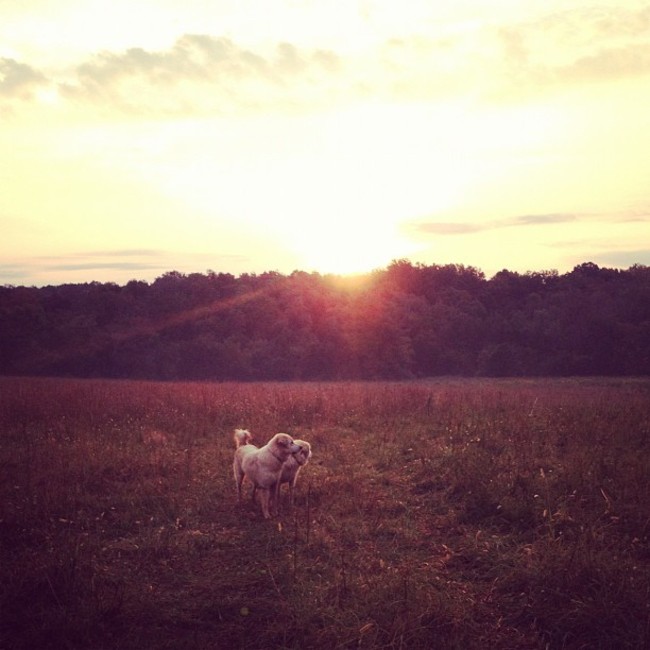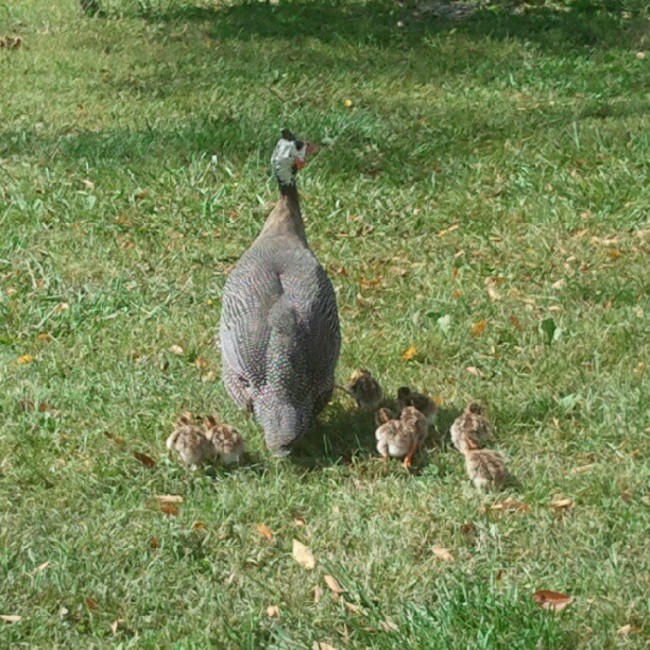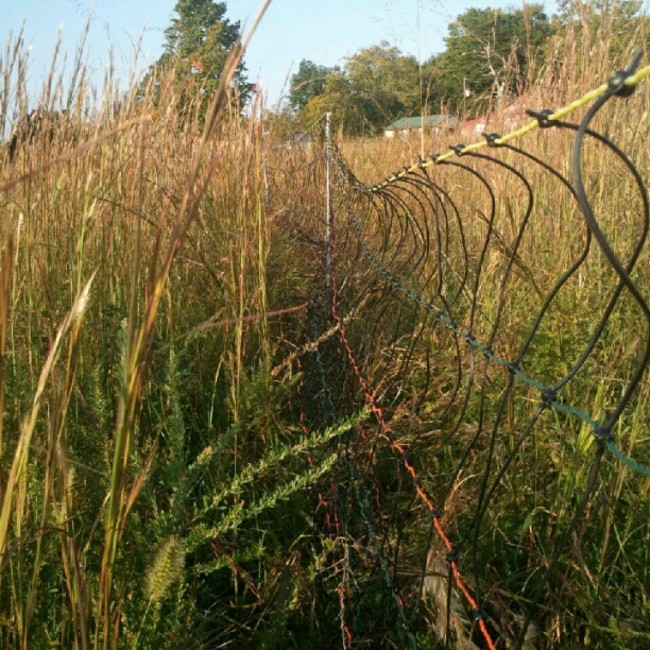Most of you know Sheba, she's one of our Livestock Guardian Dogs (LGD, for short). In fact, she's the head honcho when it comes to LGDs around here. As the Alpha dog, she runs the show and we rely on her a great deal. I'd go so far as to say that she's the most important animal we have.
Sheba is a "perimeter" dog, which means she has complete freedom and is responsible for protecting all the animals. The cows, pigs, goats, guineas, etc. She is the designated perimeter dog because she respects our fence and does not seem to have a strong inclination toward 'packing' with the goat herd. Izzy, our other adult LGD, has far greater 'pack' mentality with the goats and she does not respect the fence lines. That's why Izzy gets locked in inside the electric goat paddocks everyday. We don't want her running around causing trouble and we like knowing that a dog is with the goats at all time.
Sheba is also responsible for training Sophie, our puppy LGD. Just like kids, LGDs do best when they have a good role model. Sophie pals around with Sheba all day and night and only recently started staking out her own areas on the farm. Sheba is slowly giving Sophie increased responsibility as Sophie gets older. They also spar a lot. Sophie will start 'playing' with Sheba and it will evolve into a full-fledged battle. Sheba will let Sophie attack her for a while, casually tossing Sophie aside, and when she's had enough she'll pin Sophie on the ground and latch on to Sophie's neck.
So when Sheba went missing we were pretty nervous. She's not one to be gone for longer than an hour or two. She might make her rounds around the farm, but she's always back in time for evening milking. I can't remember when she's missed it. That's her chance to mingle with her sister, Izzy, and play bodyguard on the walk with the goats.
Not only that, but Sophie was hanging around and seemed a little more alert than her usual puppy self. Sophie without Sheba is a rare occassion. The night Sheba went missing we called and whistled as we usually do when we need her, but no response. We went to bed worried, especially with hunting season recently opening up and wild animals on the hunt before winter.



